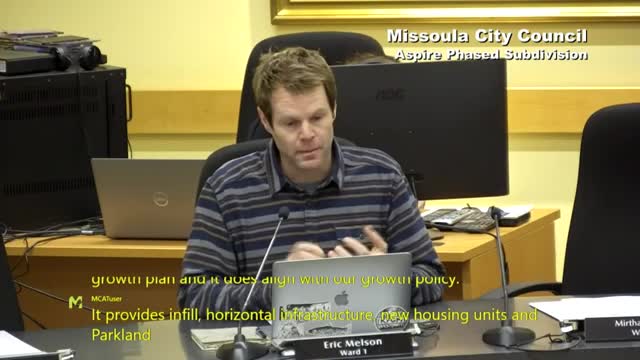City Council Faces Backlash Over Controversial Development Plans
August 26, 2024 | Missoula, Missoula County, Montana
This article was created by AI summarizing key points discussed. AI makes mistakes, so for full details and context, please refer to the video of the full meeting. Please report any errors so we can fix them. Report an error »

During a recent government meeting, significant concerns were raised regarding a proposed development project near the Clark Fork River, particularly focusing on environmental protection and community safety. One council member expressed strong reservations about the project's inconsistencies, specifically highlighting discrepancies between city and county regulations concerning riparian area buffers. The member emphasized the need for a larger buffer to safeguard the river, which is considered a vital natural asset.
Public safety issues were also a major topic of discussion, with worries about increased traffic and its potential impact on bicycle and pedestrian safety. The council member pointed out that the traffic study had not been updated to account for new recreational developments, raising uncertainties about daily traffic volumes and congestion effects on non-motorized users.
The planning board's unanimous denial of the project was noted as a critical factor in the discussion, with concerns about the density of the proposed development and the number of variances requested by the developer. The council member argued that the high number of variances indicated that the design might not be suitable for the site, leading to a conclusion that the risks associated with the project outweighed its benefits.
Another council member, while acknowledging community concerns, discussed the complexities surrounding variances in land use. They noted that some variances arise from municipal regulations that developers must navigate, suggesting that variances are not simply about breaking rules but rather addressing practical challenges posed by existing regulations.
The conversation also touched on the broader implications of development in the area, with council members recognizing that while residents understand the inevitability of development, they are concerned about its impact on their quality of life. The discussion highlighted the ongoing tension between development needs and community desires, particularly in areas designated for growth by both city and county plans.
As the meeting progressed, the council members acknowledged the importance of balancing development costs with community needs, particularly regarding infrastructure improvements that could enhance neighborhood safety and accessibility. The dialogue underscored the complexities of urban planning and the need for thoughtful consideration of both environmental and community factors in future development decisions.
Public safety issues were also a major topic of discussion, with worries about increased traffic and its potential impact on bicycle and pedestrian safety. The council member pointed out that the traffic study had not been updated to account for new recreational developments, raising uncertainties about daily traffic volumes and congestion effects on non-motorized users.
The planning board's unanimous denial of the project was noted as a critical factor in the discussion, with concerns about the density of the proposed development and the number of variances requested by the developer. The council member argued that the high number of variances indicated that the design might not be suitable for the site, leading to a conclusion that the risks associated with the project outweighed its benefits.
Another council member, while acknowledging community concerns, discussed the complexities surrounding variances in land use. They noted that some variances arise from municipal regulations that developers must navigate, suggesting that variances are not simply about breaking rules but rather addressing practical challenges posed by existing regulations.
The conversation also touched on the broader implications of development in the area, with council members recognizing that while residents understand the inevitability of development, they are concerned about its impact on their quality of life. The discussion highlighted the ongoing tension between development needs and community desires, particularly in areas designated for growth by both city and county plans.
As the meeting progressed, the council members acknowledged the importance of balancing development costs with community needs, particularly regarding infrastructure improvements that could enhance neighborhood safety and accessibility. The dialogue underscored the complexities of urban planning and the need for thoughtful consideration of both environmental and community factors in future development decisions.
View full meeting
This article is based on a recent meeting—watch the full video and explore the complete transcript for deeper insights into the discussion.
View full meeting
